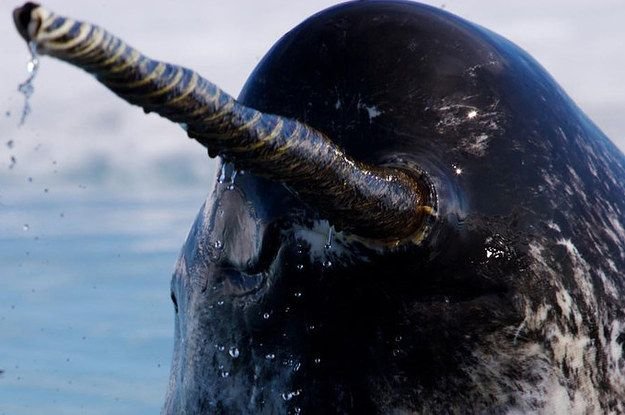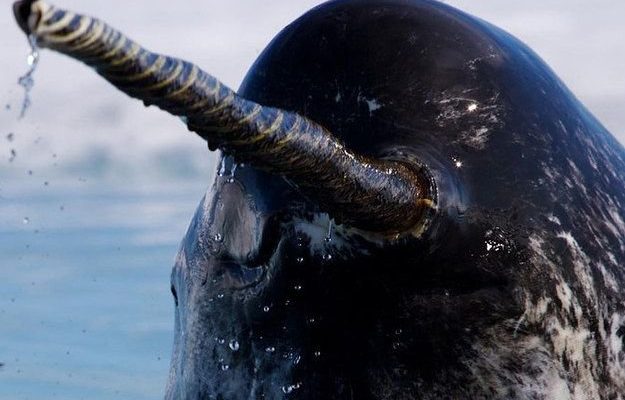
Imagine sitting down over a warm cup of coffee, and you’re eager to chat about the wonders of the natural world. You mention narwhals, and suddenly, the conversation turns into a treasure hunt, filled with unique facts and captivating stories. Let’s dive into ten cool things you probably didn’t know about narwhals.
1. What Exactly Is a Narwhal?
A narwhal is a toothed whale that lives primarily in the Arctic waters. They can grow up to about 16 feet long and weigh around 2,000 pounds. One of the most striking features of the narwhal is its long tusk, which can reach lengths of up to 10 feet! This tusk is actually an elongated tooth, and while it may look like a magical horn, it serves various purposes. For instance, males often use their tusks in social interactions, like sparring with each other to establish dominance.
In addition to their tusks, narwhals have a unique mottled gray coloration. Just like you might notice different shades in clouds, the skin of a narwhal can range from bluish-gray to pale white, often with spots that resemble a painter’s palette. You can think of them as camouflage artists, blending into their icy surroundings to evade predators like orcas.
2. The Social Side of Narwhals
Narwhals aren’t solo artists; they’re social creatures that enjoy the company of their friends! Typically, they travel in groups called pods, which can consist of anywhere from 2 to over 20 individuals. These pods are often made up of family members and close friends, much like a small community.
The social dynamics of a narwhal pod can be quite fascinating. They communicate using a variety of clicks, whistles, and other sounds. Think of it as their own underwater version of chatting with friends. This communication is crucial for locating each other in the vast, cold ocean. Plus, it helps them coordinate during hunting, ensuring they’re all on the same page while they search for tasty meals.
3. Narwhal Tusks: More Than Just a Horn
Let’s talk more about that iconic tusk. You might wonder: why do narwhals have them? It’s not just for show! The tusk is an important tool for these animals. Researchers believe that it plays a role in mating rituals, allowing males to impress potential mates.
But there’s more! Recent studies suggest that the tusk can sense changes in the environment. It has tiny nerves running through it, allowing narwhals to detect temperature and pressure changes in the water. This makes them even more fascinating, as they can literally feel their surroundings through their tusks, not unlike how we might touch something to understand it better.
4. Narwhal Diet: What Do They Eat?
So, what do these amazing creatures consume? Narwhals primarily feast on fish and squid, making them skilled hunters. They’re known to dive deep—sometimes up to 1,500 meters (almost a mile!)—to catch their prey. Imagine holding your breath and diving into a dark ocean abyss; that’s what narwhals do regularly!
While hunting, they use a technique called echolocation. This is similar to how bats navigate in the dark. Narwhals send out clicks and listen for the echoes that bounce back, helping them locate fish in the murky depths. It’s a survival strategy honed over millions of years, showcasing their incredible adaptation to harsh Arctic environments.
5. The Migration Mystery
One of the coolest facts about narwhals is their migratory patterns. Each year, they embark on a lengthy journey from their summer feeding grounds to wintering areas. You might picture them following a map through icy waters, obediently sticking to their routes.
During migration, narwhals may travel hundreds of miles. While scientists are still studying the specific routes and timing, they believe that changes in ice and water temperatures influence their migration. This adaptability is vital for their survival, especially with climate change impacting their habitats. It’s a strong reminder of how interconnected our planet is, and how every little change can ripple through the ecosystem.
6. Narwhals and Climate Change
Speaking of climate change, narwhals are on the front lines of this global issue. As the Arctic warms, their icy habitats are changing faster than you might think. This shift can impact their hunting grounds and migration patterns, putting their populations at risk.
Researchers are working hard to study these effects and understand how narwhals are adapting to their changing environment. Some scientists even use narwhal tusks—known for their incredible growth rings—to gather information about past ocean conditions. It’s like reading a tree’s age, but for these marine mammals! By understanding how narwhals have fared in the past, we can better predict what the future holds for them.
7. Narwhals in Culture and Folklore
Throughout history, narwhals have captured the imagination of many cultures. Their tusks, often mistaken for unicorn horns, were once thought to have magical properties. People believed that possessing a narwhal tusk could protect against poison and illness.
In Norse mythology, they sometimes appeared as mythical creatures, adding to their aura of mystery. Even today, the narwhal is celebrated in art and literature, often representing curiosity and the unexplored sea. If you’ve ever heard tales of fantastical sea creatures, you can thank the narwhal for inspiring some of those stories.
8. Conservation Efforts: Protecting the Narwhal
With all these fascinating traits, it’s crucial to protect narwhals for future generations. Conservation groups and scientists are working together to raise awareness about these unique animals and their habitats.
Efforts include monitoring their populations, studying their behaviors, and advocating for policies that protect the Arctic environment. The more we know about narwhals, the better equipped we are to help them thrive. Whether it’s reducing plastic pollution in oceans or minimizing climate change impacts, every action counts.
In conclusion, the narwhal is truly a remarkable creature. Its blend of mystique, social behavior, and adaptation to a changing world makes it a symbol of the beauty and fragility of our oceans. Here’s the thing: next time you hear about the “unicorn of the sea,” remember all the incredible facts behind this unique animal. Let’s continue to marvel at—and protect—these enchanting marine mammals together.

